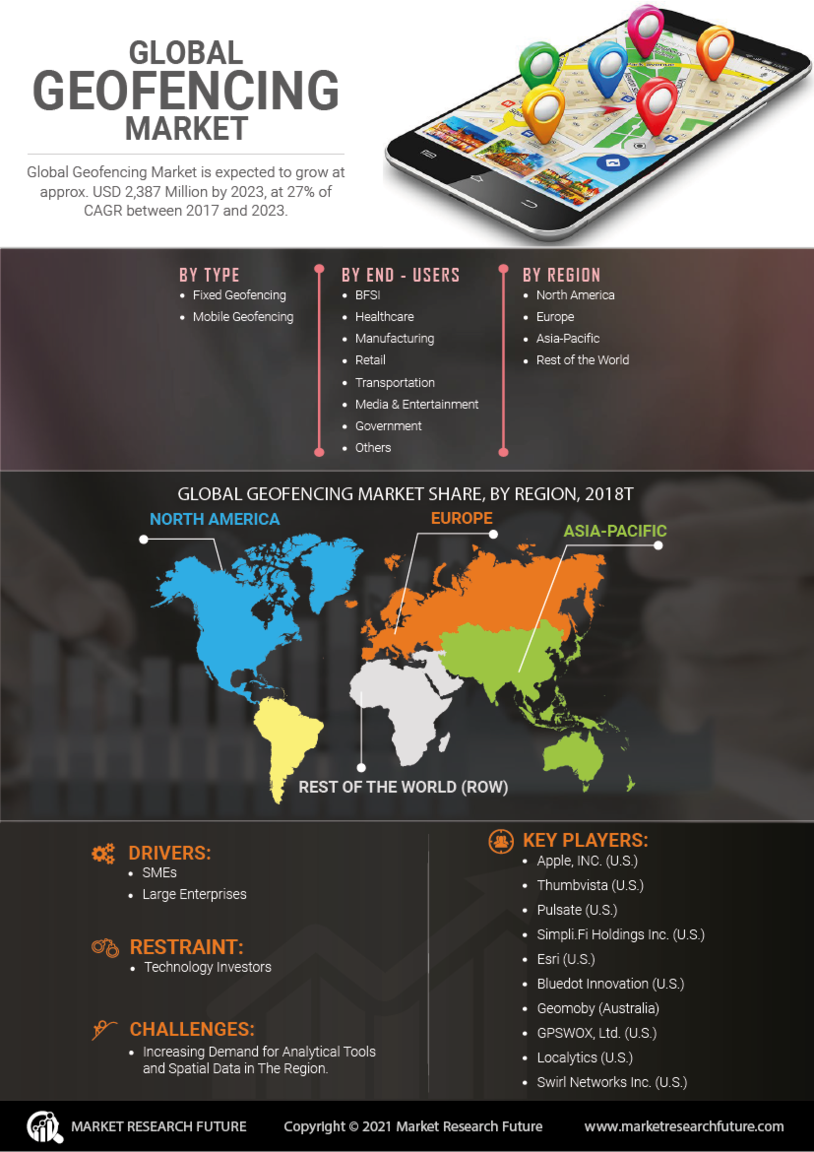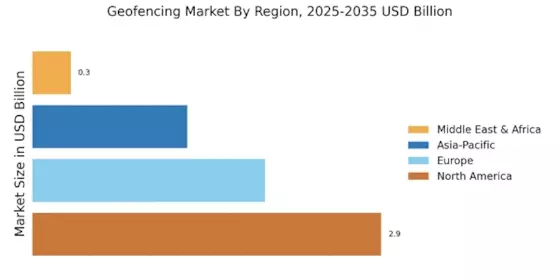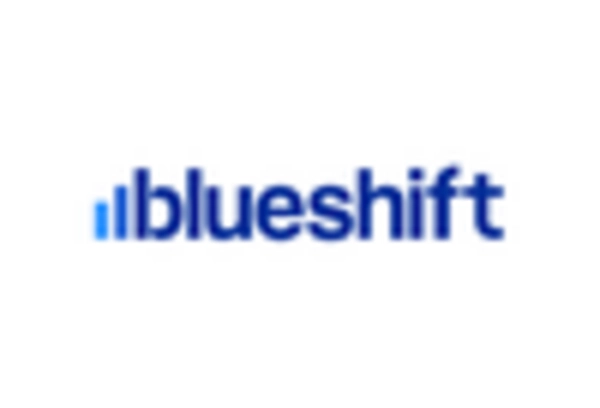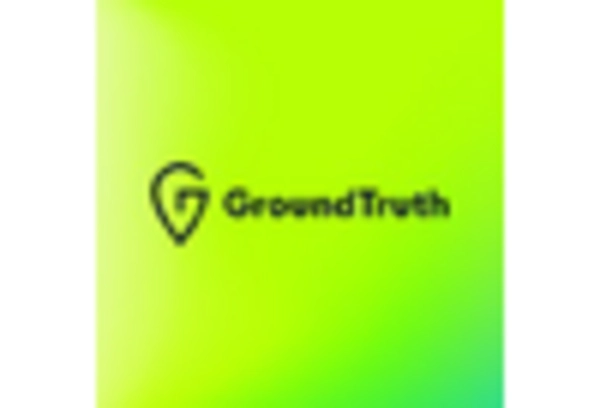Emergence of Smart Cities
The emergence of smart cities is a significant driver for the Geofencing Market. As urban areas evolve to incorporate advanced technologies, geofencing plays a vital role in enhancing city management and services. Smart city initiatives often utilize geofencing for traffic management, public safety, and efficient resource allocation. Data suggests that investments in smart city projects are on the rise, with billions allocated to infrastructure improvements. This trend indicates that as cities become smarter, the demand for geofencing solutions will likely increase, thereby fostering growth within the Geofencing Market.
Rise of Location-Based Marketing
The increasing adoption of location-based marketing strategies is a primary driver for the Geofencing Market. Businesses are leveraging geofencing technology to deliver targeted advertisements and promotions to consumers based on their real-time location. This approach not only enhances customer engagement but also improves conversion rates. According to recent data, the location-based marketing sector is projected to grow significantly, with estimates suggesting a compound annual growth rate of over 25% in the coming years. As companies recognize the value of personalized marketing, the demand for geofencing solutions is likely to surge, thereby propelling the Geofencing Market forward.
Advancements in Mobile Technology
The rapid advancements in mobile technology are significantly influencing the Geofencing Market. With the proliferation of smartphones and mobile applications, businesses are increasingly utilizing geofencing to enhance user experiences. The integration of GPS and Bluetooth technologies allows for precise location tracking, enabling companies to engage customers in real-time. Data indicates that mobile app usage has reached unprecedented levels, with billions of downloads annually. This trend suggests that as more consumers rely on mobile devices, the demand for geofencing solutions will likely increase, driving growth within the Geofencing Market.
Increased Focus on Customer Engagement
The heightened focus on customer engagement is driving the Geofencing Market. Companies are increasingly recognizing the importance of building strong relationships with their customers, and geofencing technology offers a unique way to achieve this. By delivering personalized content and promotions based on location, businesses can create a more engaging shopping experience. Research indicates that brands utilizing geofencing see improved customer retention rates and higher levels of satisfaction. As organizations strive to enhance their customer engagement strategies, the demand for geofencing solutions is expected to rise, further propelling the Geofencing Market.
Growth of E-commerce and Retail Sectors
The expansion of e-commerce and retail sectors is a crucial driver for the Geofencing Market. As online shopping continues to gain traction, retailers are adopting geofencing technology to bridge the gap between online and offline shopping experiences. By sending location-based notifications and offers, retailers can attract customers to physical stores, thereby enhancing foot traffic. Recent statistics reveal that e-commerce sales have surged, with projections indicating a steady increase in the coming years. This growth in retail activity suggests that the Geofencing Market will experience heightened demand as businesses seek innovative ways to engage consumers.


















Leave a Comment